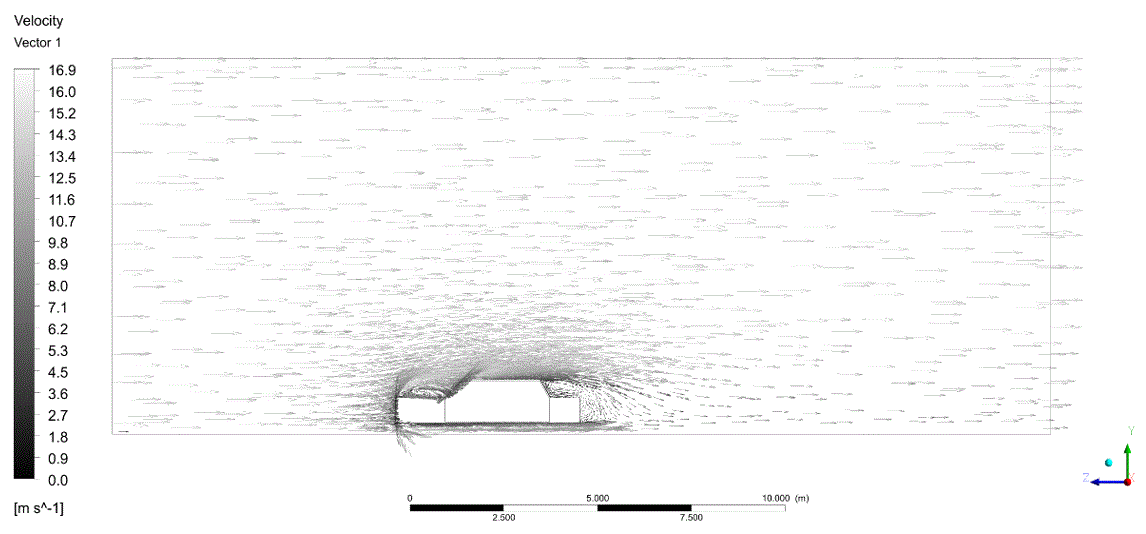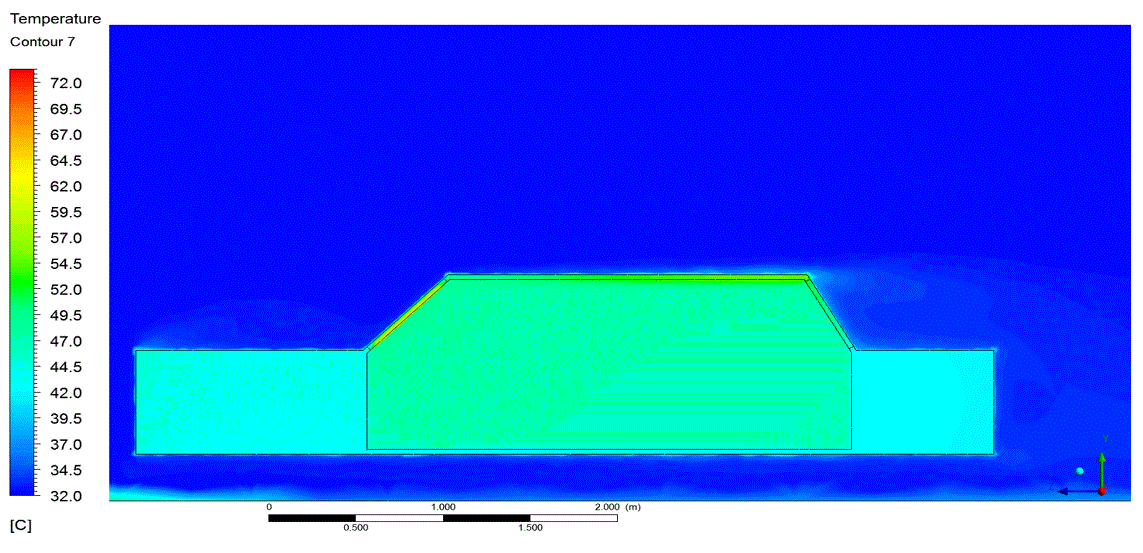Several representative studies are described below.
Biomechanics
Mechanical Interaction between Overlapping Stents and Peripheral Arteries - Numerical Model
The Superficial Femoral Artery (SFA) is the longest section of the femoropopliteal artery and can reach a length of 28-32 cm. Multiple stenoses can occur along its length. In such cases, two or three overlapping stents are inserted into the artery. Stent overlapping significantly increases the risk of stent fracture. Following restenosis, the procedure can lead to intermittent claudication, limb ischemia and in some cases eventually amputation.
The study motivation is to evaluate the outcomes of deploying overlapping stents in terms of stresses exerted on the artery and implants and establish the fact that overlapping stents must not be designed as solitary stents.
This study evaluates the stresses overlapping stents exert on the artery and on each other using a numerical (finite element) model. The model formulated comprises the stents and a two layers artery, each layer presenting hyper-elastic mechanical material properties.
Results demonstrate significant increase in radial and circumferential stresses exerted on the artery at regions of overlapping stents compared with those of single stents (~50%). With similar results relating to the implant stresses. Therefore, procedures involving overlapping stents must employ uniquely designed implants of axially variable radial stiffness, not as performed today.



Representative study:
Blood Flow in the Abdominal Aorta Post 'Chimney' Endovascular Aneurysm Repair
A Computational Fluid Dynamics Study
Aortic aneurysms are a main death cause in the elderly throughout the western world. In recent years, more aneurysm repairs are performed endovascularly , excluding the aneurysm sac, using stent grafts (SGs) inserted into the aneurysm site through the arterial system (minimally invasive). In this study, we analyze the hemodynamics in an aneurysmatic abdominal aorta (AAA) endovascularly repaired by a stent graft (SG) system using the chimney technique. Computational fluid dynamics (CFD) is employed to study models of a healthy aorta versus an aorta post 'chimney' endovascular aneurysm repair (ChEVAR) using chimney stent grafts (CSG) inserted into each renal artery in parallel to the aortic SG. Results demonstrate that the presence of the CSGs results in stagnation regions and wall shear stress (WSS) modifications, yet the flow regime remains laminar. Thus indicating the spatially contained effects of the ChEVAR technique and further supporting its merit.





Representative study:
A metrology for braided Nitinol devices stiffness
In this contribution we are working on establishing a database for evaluating the stiffness of braided Nitinol devices. We developped a uniques code capable of modelling true 3D braids (see movie below). We use FEA to evaluate the design stiffness. Data was verified using several experimental configurations and the numerical results are in good agreement with the analytical results.
A representative FEA analysis/simulation of a braided device is shown below (courtesy of Tenzor/Ansys Israel, joint study).
Thermoregulation and transportation
Population growth, increase in society energetic requirements, technological advances and strict environmental / health regulations constantly drive the development of more efficient energy systems. Much research has been conducted in this field. For example, the search for green/sustainable energy sources (e.g., solar, wind-based and geothermal), the recycling field and improvements upon the mechanical systems that produce energy (e.g., heat exchangers) are widely studied. Regrettably, nowadays it is becoming increasingly difficult to improve the efficiency of common engineering systems.
Nevertheless, one aspect of energy efficiency has not received sufficient attention - the optimization of engineering systems from the aspects of their human end users. For example, how cold should a room be does not depend on the efficiency of the air conditioner but on the subjective feel of the people currently occupying this room. There is no point to an efficient system that provides heating when the environment is hot and the users request cooling. How much light a room needs does not depend on the light source technology but again, on the particular needs of the humans occupying this room. A sleeping person does not require the same light or temperature as a working person. And so forth.
In this study, we focus on human end user aspects in transportation, in particular in private vehicles. We target reducing the energy expenditure of a private vehicle while simultaneously preserving human life by averting accidents. Most of us travel more than an hour a day by car, some of us up to two-three hours and few of us (e.g., professional drivers) even more. Cars represent one of our major habitats. Billions of people travel the roads worldwide, many of them in private cars. In contrast with public transportation, private cars represent a significant specific (per person) energy expenditure since relatively high energy amounts are consumed for transporting a single to few users. The automobile has become an enormous energy overhead around the world, causing urban environmental pollution and damaging the life quality and expectancy of numerous city inhabitants. Furthermore, transportation related morbidity and mortality rates are expected to steadily rise due to the heavy ever-increasing traffic jams and resulting air pollution.
Vehicles have a complicated geometry and, unlike buildings, a relatively small thermal mass and size. In hot sunny countries, cars can receive a nearly full surface solar radiation for most of the day. While buildings are partially embedded in the ground and thus have direct thermal link to a huge thermal mass, cars’ tires are effectively insulating the vehicle body from the ground. Therefore, cars heat up relatively quickly to high temperatures that can endanger human lives or impede their driving performance. In addition, the temperature in a vehicle compartment is highly non-homogenous due to the car relatively bad insulation (a lot of glazed surface area subject to direct and diffuse radiation) and mild air conditioning. It is therefore very important to use research in order to improve our subjective feeling in the car environment while conserving energy and ensuring safety as much as possible.
This study represents a unique and innovative approach that stems from treating the vehicle as the driver / passenger’s environment rather than focusing on the mechanical efficiency of the system itself. We focus on biotechnological aspects (‘human engineering’) in transportation rather than mechanical or chemical aspects. We are designing a novel electronic system capable of evaluating the driver/passenger environmental parameters (temperature, relative humidity, air velocity etc’). We are monitoring these parameters and using the Predicted Mean Vote (PMV, a measure of the person’s comfort score at his/her environment) formula to index the driver / passengers’ Thermal Comfort (TC). We correlate the TC with the user performance (car simulator tests) and satisfaction (using questionnaires that assess his/her subjective feeling). We also perform computer simulations (CFD, Ansys Fluent) to examine the effects of environmental parameters such as temperature and airflow on the occupants PMV. We explore the effects of vehicles geometries, radiation source orientation and flux value (season), environment temperature (season) and the car air speed (urban vs countryside location).
In 2012, about 90 people died every day on the U.S roads. People subjected to thermal discomfort exhibit reduced driving performance and concentration fall down accompanied by a feeling of fatigue and an increased accident risk. In 2014, 32,675 people died in car accidents only in the U.S. By using our novel approach with respect to safety, we hope we will be able to decrease this number. A deep understanding of the human body can be the key to novel approaches to evade car accidents. In contrast with present systems based on car distance monitoring that can alert drivers a few seconds ahead, we can monitor the driver tendency to fall asleep or his/her discomfort by heart or respiration rates in advance by minutes. This make our alert window more than two orders of magnitude longer than currently existing systems.
We are now finalizing the first generation of the system (see below). Preliminary results demonstrate our ability to measure the car environment main parameters (e.g., solar radiation, temperature, relative humidity and air speed) and to simulate the heat transfer about the car via radiation and convection.
The desirable outcome of this study is to understand how the driver’s comfort affects the car energetic demands and safety. This will facilitate future algorithms that modify the car environment (e.g., air conditioning, music power, windows position, etc') when drivers comfort drops below acceptable parameters (safety included).







